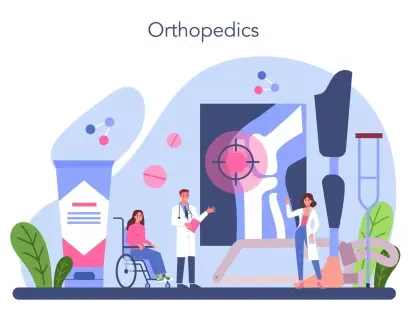As we delve into the complex intersection of immigration policy and healthcare staffing, I’m thrilled to sit down with Faisal Zain, a renowned healthcare expert with a deep background in medical technology. With years of experience in the development and manufacturing of diagnostic and treatment devices, Faisal brings a unique perspective on how policy changes, like the recent $100,000 H-1B visa fee, impact the healthcare sector, particularly in rural and underserved areas. In this conversation, we’ll explore the challenges hospitals face in recruiting international talent, the ripple effects on patient care, and potential solutions to bridge the staffing gap in critical regions.
How has the introduction of the $100,000 H-1B visa fee impacted the ability of rural hospitals to attract and hire international medical graduates?
The impact has been significant, especially for rural hospitals that often operate on tight budgets. This fee creates a financial barrier that many facilities simply can’t overcome. I’ve spoken with administrators who say they’ve had to rethink their hiring strategies entirely because the cost of bringing in a single international doctor now feels prohibitive. These hospitals rely heavily on foreign-trained physicians to fill gaps, particularly in specialties where there’s a shortage of American graduates willing to work in remote areas. Without the ability to afford these visas, they’re left scrambling to maintain adequate staffing levels.
Can you share some insight into why rural and underserved areas depend so much on international medical graduates for their healthcare workforce?
Absolutely. Rural areas face a chronic shortage of healthcare providers, and international medical graduates often step in to fill that void. Data shows that over 60% of these graduates end up working in regions with physician shortages, with a large portion in rural settings. They’re more willing to take on roles in less desirable locations because they see it as a pathway to building a career in the U.S. American graduates, on the other hand, tend to gravitate toward urban centers or academic institutions where there are more opportunities for advancement and higher pay. So, for rural hospitals, international talent isn’t just a bonus—it’s a lifeline.
What are some of the key reasons American medical graduates seem less inclined to work in rural or underserved communities?
There are a few factors at play here. First, many American graduates come out of medical school with significant debt, so they’re often drawn to higher-paying positions in urban areas to pay off loans quickly. Second, rural settings can feel isolating, both professionally and personally, with fewer opportunities for collaboration or access to cutting-edge facilities. Finally, there’s a prestige factor—residencies and positions tied to well-known urban hospitals often carry more weight on a resume. It’s a systemic issue that pushes talent away from the areas that need it most.
How do you see this steep visa fee affecting patient care in these already vulnerable communities?
The effects could be devastating. When hospitals can’t hire enough doctors, patients face longer wait times, reduced access to specialists, and in some cases, clinic closures. I’ve heard from healthcare leaders who are already under pressure to keep their doors open due to financial constraints. Adding a $100,000 fee per international hire exacerbates the problem, potentially forcing them to cut services. For rural patients, who often have limited options to begin with, this means delayed care or having to travel long distances for treatment, which isn’t feasible for everyone.
From a policy perspective, what do you think was the intended purpose behind this $100,000 H-1B visa fee, and how does it align with the needs of the healthcare sector?
The stated goal of the fee is to prioritize American workers by making it more expensive for companies to hire foreign talent, thereby encouraging local hiring. In theory, it’s meant to protect wages and job opportunities for U.S. citizens. However, this approach doesn’t fully account for sectors like healthcare, where there simply aren’t enough qualified American workers to meet demand, especially in rural areas. The policy seems more tailored to industries like tech, where the labor market dynamics are different. In healthcare, it risks creating a bigger gap in an already strained system without offering a clear alternative for filling those critical roles.
What strategies or alternatives might hospitals consider to cope with the financial burden of this new fee while still addressing staffing shortages?
Hospitals are in a tough spot, but some are exploring creative solutions. A few are looking into partnerships with government programs or advocacy groups to secure funding or subsidies to offset the visa costs. Others are doubling down on recruiting locally, even if it means longer hiring timelines or offering incentives like loan forgiveness to attract American graduates. There’s also talk of expanding telemedicine to bridge the gap, though that’s not a full substitute for on-site physicians. Ultimately, though, many rural facilities don’t have the resources to absorb these costs or pivot quickly, so they’re hoping for policy exemptions or relief.
What is your forecast for the future of rural healthcare staffing if policies like this visa fee remain in place without adjustments for the healthcare sector?
If this fee stays as is, without carve-outs or exemptions for healthcare, I foresee a deepening crisis in rural staffing. We’re already projecting a shortage of tens of thousands of physicians in the coming decades, and rural areas will bear the brunt of that. Hospitals may have to cut services or close entirely, leaving communities with even less access to care. I think we’ll see increased advocacy from medical associations and local leaders pushing for policy changes, but if those efforts don’t succeed, the health disparities between urban and rural areas will only grow wider. It’s a challenging road ahead unless we strike a balance between protecting American workers and addressing critical workforce needs.









